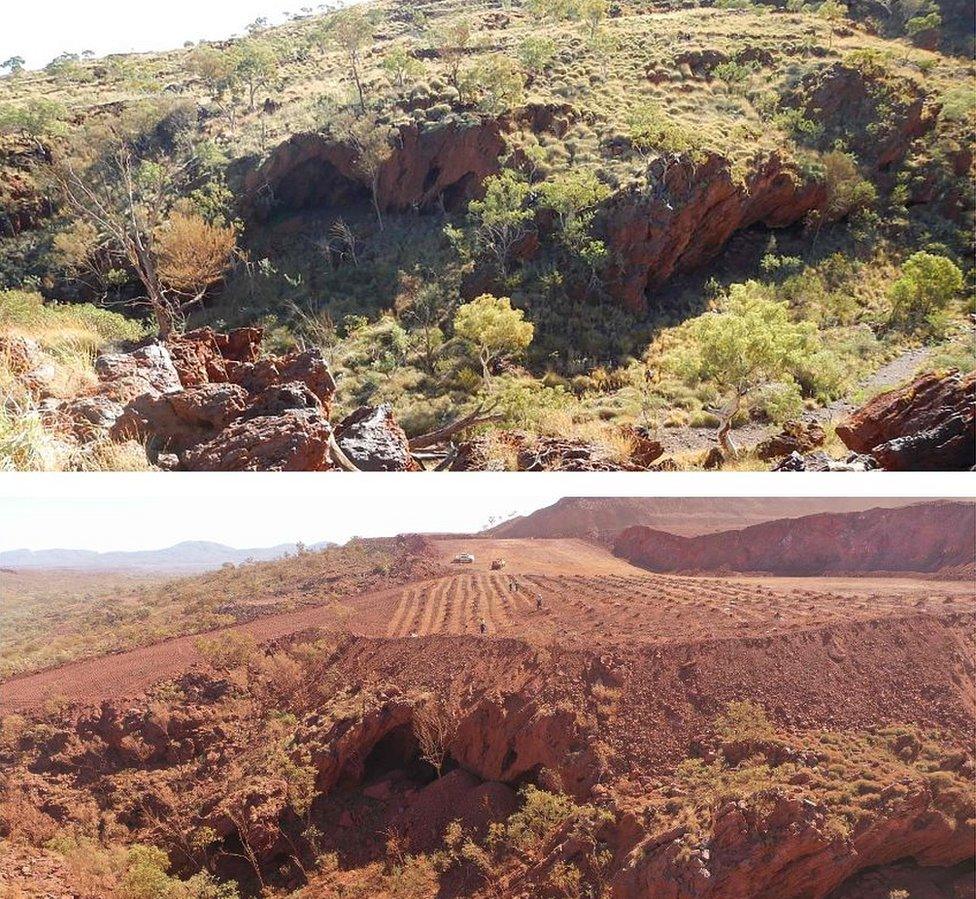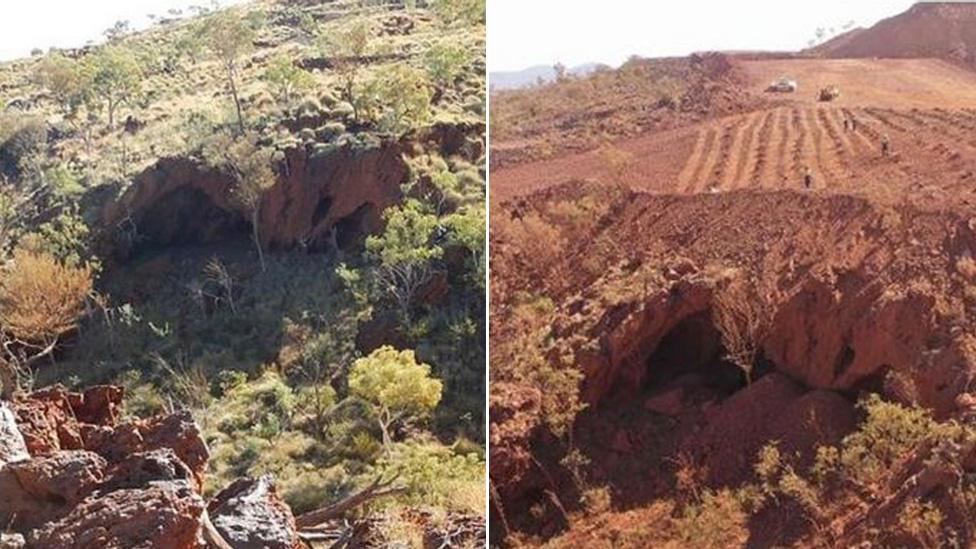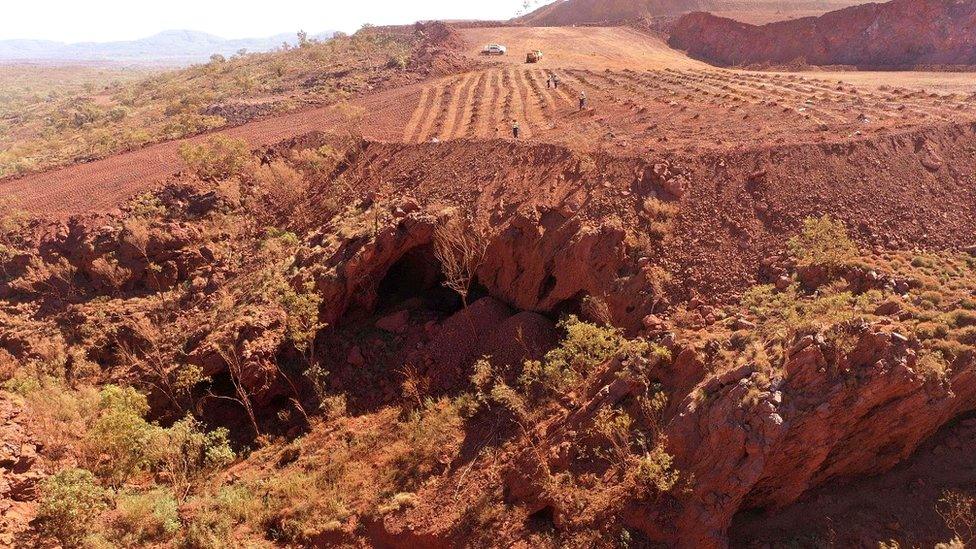Juukan Gorge: Rio Tinto investors in pay revolt over sacred cave blast
- Published

Juukan Gorge cave site before and after mining works
Mining giant Rio Tinto has faced a shareholder revolt over a $10m (£7.2m) bonus for its outgoing boss.
In a rare development, 61% of votes cast at its annual meeting opposed the firm's executive remuneration package.
The backlash comes after the company destroyed sacred Aboriginal rock shelters in Western Australia last May.
Rio Tinto blasted the 46,000-year-old rock shelters at Juukan Gorge to expand an iron ore mine, sparking an outcry and leading to several resignations.
The pay package covers $55m earmarked in salary and bonuses for the company's top 14 executives.
Despite the shareholder rebellion, the executives are still expected to receive their payouts, as the vote was advisory only.
In September, chief executive Jean-Sébastien Jacques and other senior executives, including the heads of its iron ore and corporate relations divisions, said they would be leaving the company.
And earlier this year chairman Simon Thompson and non-executive director Michael L'Estrange also said that they would leave the company.
"I am ultimately accountable for the failings that led to this tragic event," Mr Thompson said in the statement.
Responding to the outcome of the vote, the company said "This constitutes a 'first strike'".
In Australia, if a company's executive pay proposal is rejected by shareholders for two consecutive years, the board could face a vote to be removed.
"The board acknowledges that the executive pay outcomes in relation to the tragic events at Juukan Gorge are sensitive and contentious issues," Rio Tinto said in a statement.
Maliwawa Figures: Ancient Aboriginal art 'unlike anything seen before'
What was at Juukan Gorge?
The caves at Juukan Gorge - seen as one of Australia's most significant archaeological research sites - had shown evidence of continuous human habitation dating back 46,000 years.
Artefacts found at the caves include a 28,000-year-old animal bone tool and a 4,000-year-old belt made of plaited human hair.
DNA testing had directly linked it to the Puutu Kunti Kurrama and Pinikura people - the traditional owners of the land.
The shelters sat above about eight million tonnes of high-grade iron ore, with an estimated value of $104m.
In December, a parliamentary inquiry ordered Rio Tinto to rebuild the cave system, and blasted their destruction as "inexcusable".
In its report, external - titled Never Again - the inquiry concluded Rio Tinto "knew the value of what they were destroying but blew it up anyway".
It made seven recommendations, including a moratorium on all mining in the local area, and changes to heritage protection laws.
- Published3 March 2021

- Published11 September 2020

- Published24 August 2020
